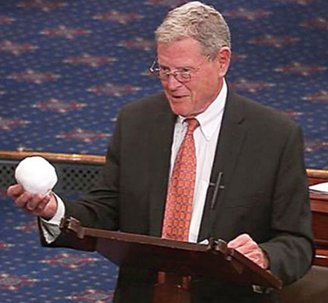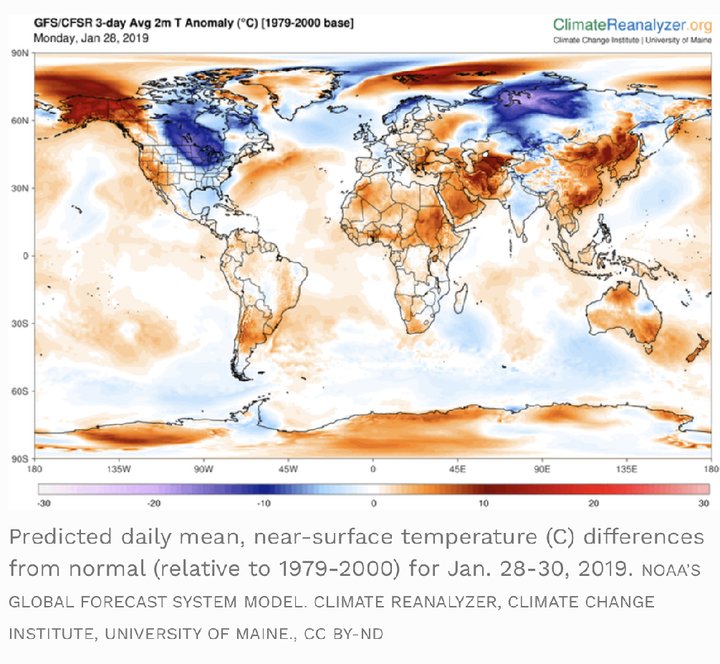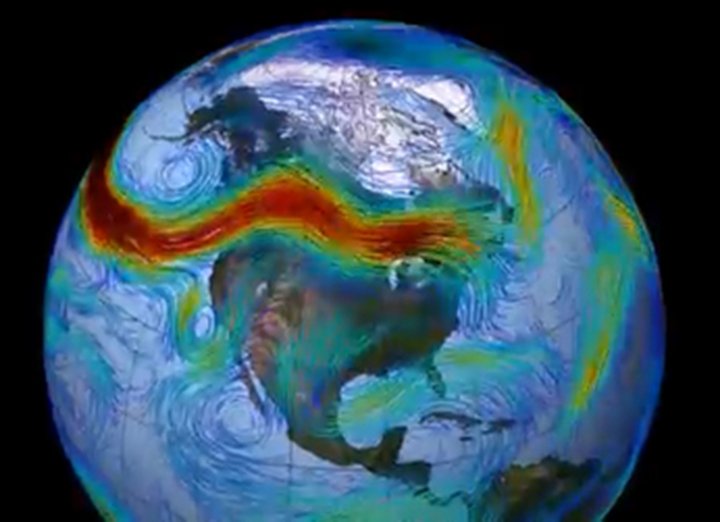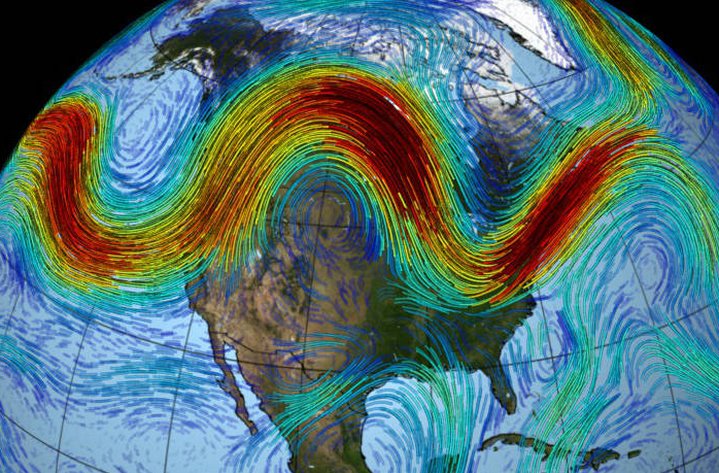The current leader of the free world doesn’t read the North
Coast Journal, it seems. If he had, he’d have seen a brilliant
(brilliant!) summary of what’s causing extreme winter weather
conditions in the US that ran four years ago (3/19/15) under the
catchy lede, “The
Future (Weather) Is Now.” Had he absorbed the
message of that column, he wouldn’t have made a fool of himself a
few days ago, tweeting, “In the beautiful Midwest, wind chill
temperatures are reaching minus 60 degrees, the coldest ever
recorded…What the hell is going on with Global Waming [sic]? Please
come back fast, we need you!”
In the beautiful Midwest, windchill temperatures are reaching minus 60 degrees, the coldest ever recorded. In coming days, expected to get even colder. People can’t last outside even for minutes. What the hell is going on with Global Waming? Please come back fast, we need you!
— Donald J. Trump (@realDonaldTrump) January 29, 2019

Our fearsome leader’s sublime ignorance of meteorology was only matched, politically, by Oklahoma representative Jim Inhofe, who brought a snowball into Congress in February 2015, thereby—in his eyes— proving that global warming is a hoax.
What’s with these guys? Aren’t they surrounded by aides and interns, any one of who could have put them right? This isn’t rocket science, it’s not even college science. High school kids get the notion of “extremes vs. averages.” While the Midwest was freezing, most of the rest of the world was experiencing higher-than-normal temperatures; Australia is having its hottest summer on record, with temperatures over 115 degrees F last week.

(include caption at bottom of photo) Red = hotter than normal, blue colder. (NOAA)
(Trump’s tweet would be like you and me sitting in the Arcata Plaza last fall and I say to you, “What are you talking about, California’s worst ever fire season? I don’t see any fires!”)
DJT isn’t a meteorologist, neither am I. But you don’t have to be one, or even a high school student, to understand what’s been going on to create Chicago’s deep freeze and three out of four people living in the US waking up to sub-zero temperatures last week.
The quick and dirty explanation is this: (1) the jet stream is more erratic and weaker than it used to be, allowing so-called “polar vortices” to penetrate the usual barrier between polar and temperate air masses; (2) this change in the jet stream is—almost certainly—due to a lessening temperature difference between polar and mid-latitude regions (since the Arctic is warming three times faster, on average, than the rest of the world); and (3) it’s all exacerbated by increased moisture in the air—the result of evaporation from our warmer ocean—leading to more extreme winter storms.

“Well-behaved” normal jet stream. Faster winds in red, slower in blue. (NOAA)

Extreme jet stream, allowing southern intrusion of polar vortex. (NOAA)
Feel free to skip this more detailed version of the above, and/or read my two Journal columns here and here, as best as we can currently understand it (climatology being an incredibly complex topic). “Our” jet stream, the one that affects mid-latitudes, like the US, comes about as a result of warm (high pressure) air moving north from the equator towards colder (low pressure) areas. The spin of the Earth causes this stream of air to head eastward—remember the Coriolis Effect?—creating a broad “river” of air between 5 and 8 miles high, the jet stream (more correctly, the “northern hemisphere polar jet”). Because this river acts as a wall keeping cold polar air separated from warm equatorial air, we in the US are normally insulated from the extremes of polar weather.
The jet stream is changing, however. Since about 2000, it’s gotten both weaker and kinkier, and the kinks are working their way west-east across the country slower, sometimes stalling for days or weeks at a time. The most compelling reason for the change comes from a seminal 2012 paper by climatologists Jennifer Francis and Stephen Vavrus (“Evidence linking Arctic amplification to extreme weather in mid‐latitudes”) in which they argue that a warming Arctic—warming much faster than the rest of the world—is resulting in less of a temperature difference between polar and mid-latitude air. (It’s complicated, as I say. Other researchers suspect increased El Niño and La Niña activity share the blame.)
With less of a barrier between warm and cold, and with the jet stream now dipping way south in winter, here comes snow—that’s the increased precipitation I mentioned above. Which is easy to explain: warmer oceans = more evaporation. That’s even without getting into the increased energy from a warmer climate available to drive extreme conditions. Want yet more? Check this.
Hey, maybe POTUS reads LoCO, and he’ll put out an “I was wrong about global warming” tweet tonight. Ya think?
CLICK TO MANAGE